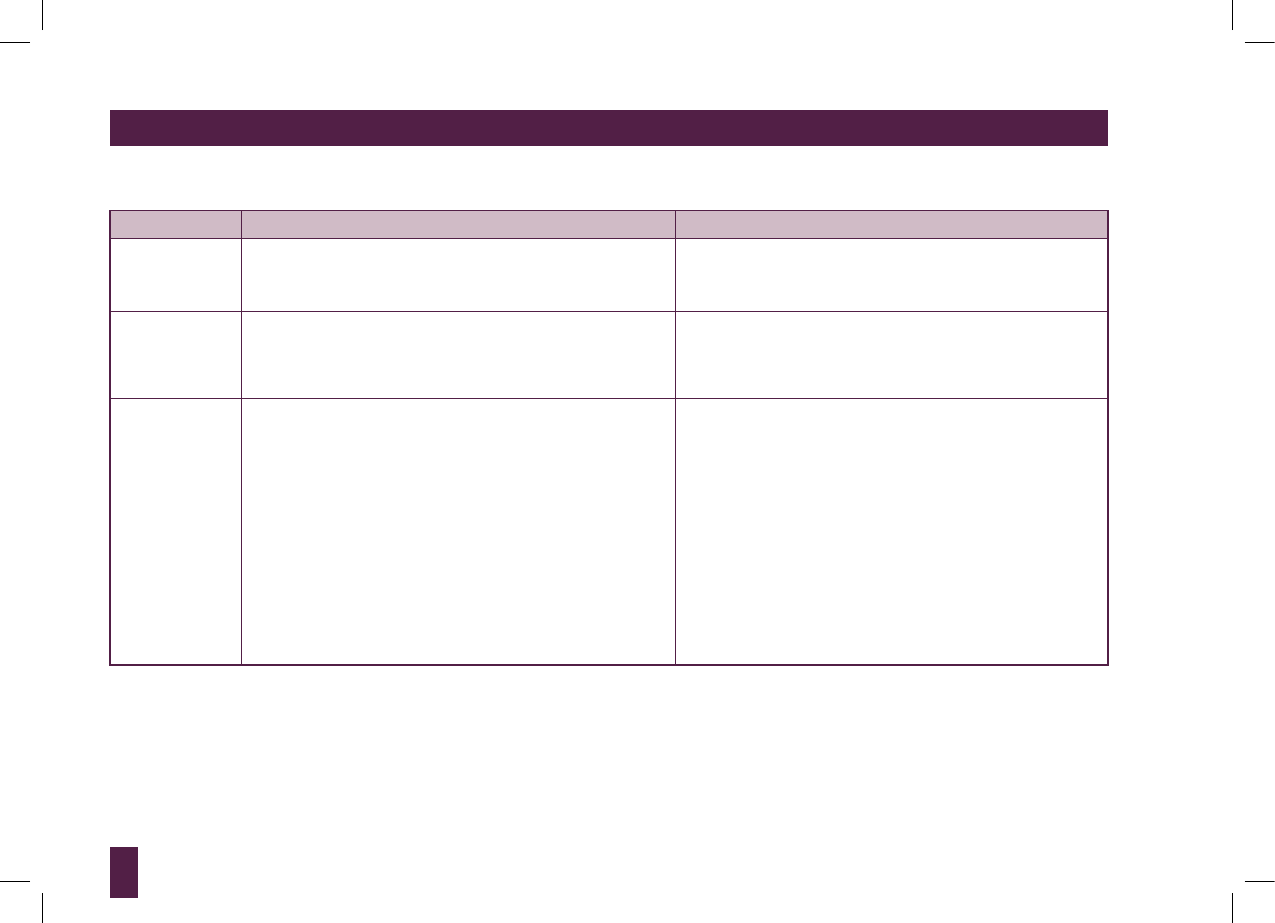
24
OPERATING YOUR BREVILLE BREAD MAKER - BEGINNER’S GUIDE
The table below outlines the phases of the cycle.
PHASE DESCRIPTION NOTES
‘Preheat’ The ‘preheat’ phase warms the ingredients to allow the yeast to
perform optimally. It also allows heavy grains and flours to absorb
liquid, before softening and expanding for better gluten development.
During this phase, no movement occurs in the bread pan.
This phase will only occur on the WHOLE WHEAT, WHOLE WHEAT
RAPID and JAM settings.
‘Knead 1’ The ‘knead 1’ phase distributes the yeast and moistens the gluten in
the flour.
During this phase, the paddle will rotate slowly.
Viewing window may fog up. This is normal and will dissipate later
in the cycle.
There may be lumps and unincorporated ingredients in the corners
of the bread pan. This is normal. They will be incorporated during the
‘knead 2’ phase.
‘Knead 2’ The ‘knead 2’ phase thoroughly mixes the ingredients and strengthens
the moistened gluten strands to a springy elasticity. A dough ball will
form.
During this phase, the paddle will rotate faster and in both the
clockwise and counterclockwise direction. You may notice the
collapsible paddle automatically collapse into the flat position then
return to the upright position multiple times during this phase. This
action allows the dough ball to accumulate all the unincorporated
ingredients in the corners of the bread pan.
The Automatic Fruit and Nut Dispenser will automatically release its
contents 8 minutes before the end of the ‘knead 2’ phase, regardless
of whether it has been loaded.
Viewing window may fog up. This is normal and will dissipate later
in the cycle.
There may be lumps and unincorporated ingredients in the corners of
the bread pan. Be patient - the clockwise and counterclockwise direction
of the paddle will eventually incorporate all the ingredients before the
end of the ‘knead 2’ phase, however if necessary use a rubber spatula
to fold in any flour from around the edges of the bread pan. This is
especially important on the GLUTEN FREE and YEAST FREE settings.
Humidity, the way the flour is measured and the moisture content
of the flour affects dough consistency. For this reason, you may wish
to check the dough approximately 5-10 minutes into this phase. Lift
open the lid. Poke the dough ball with your finger, careful to avoid
the moving paddle. The dough should feel soft and sticky like scotch
tape. If it is too dry, add liquid (80°F/27°C), ½ to 1 tablespoon at a
time. If it is too wet, add flour 1 tablespoon at a time.
NOTE: Gluten free doughs will be wetter and more like a thick, sticky
batter, while yeast free bread doughs will look like a cake batter.
BBM800XL_IB_B10_FA.indd 24 14/09/10 9:09 AM


















